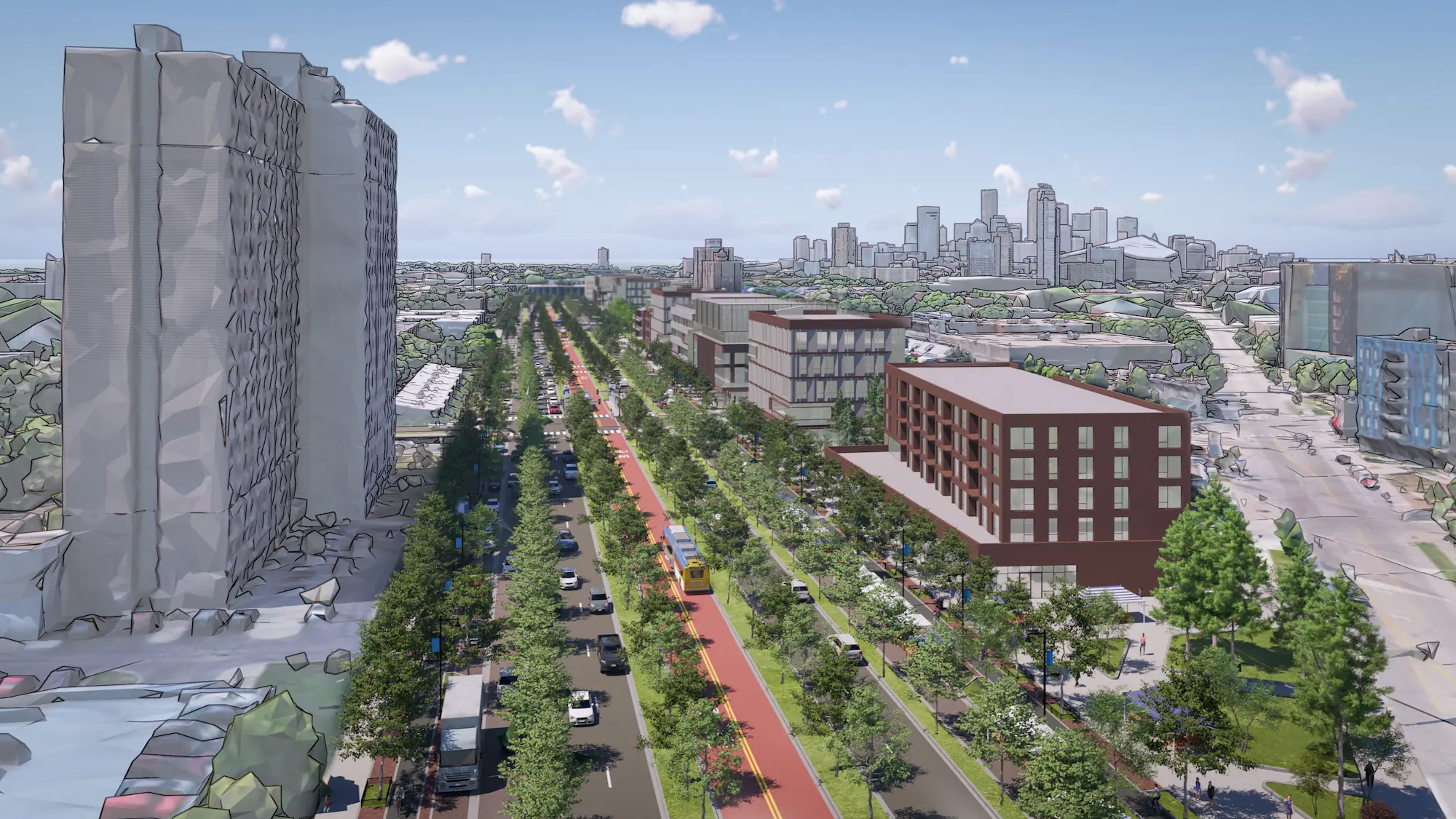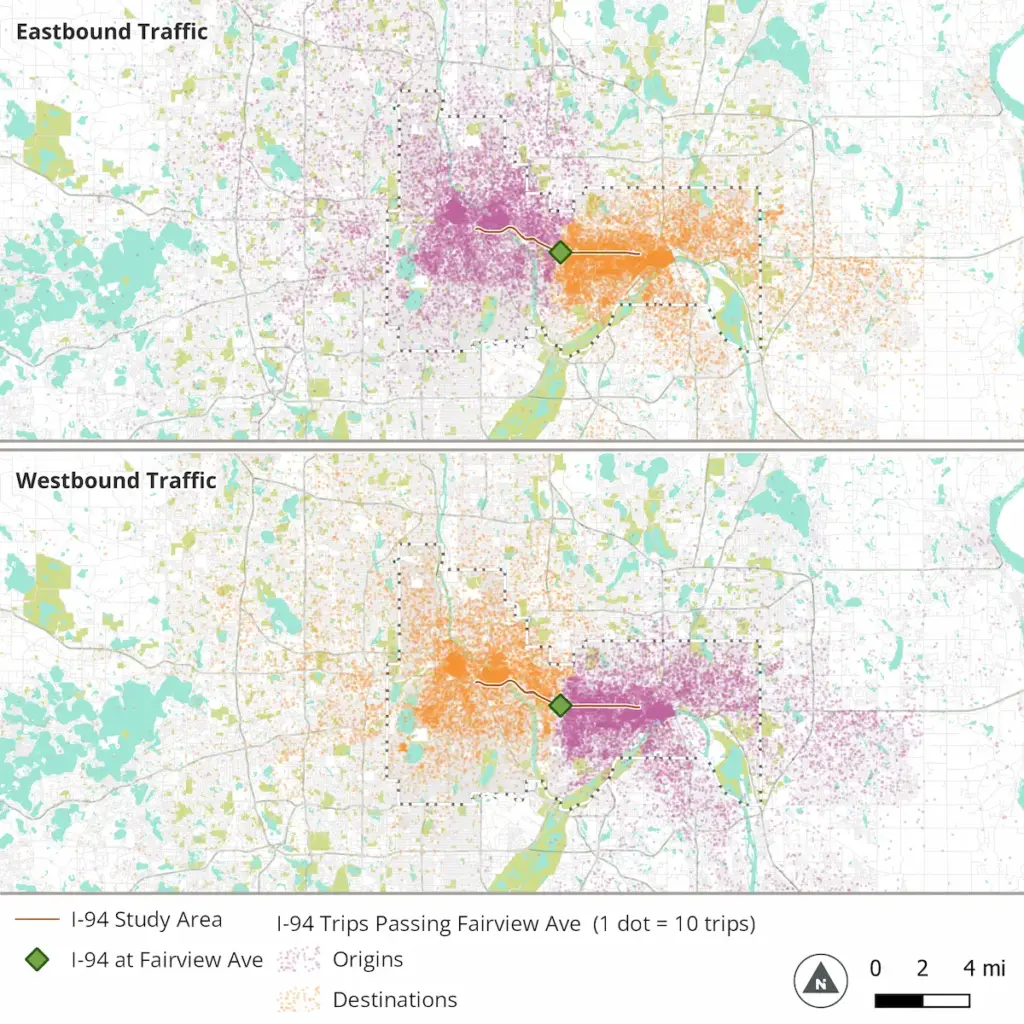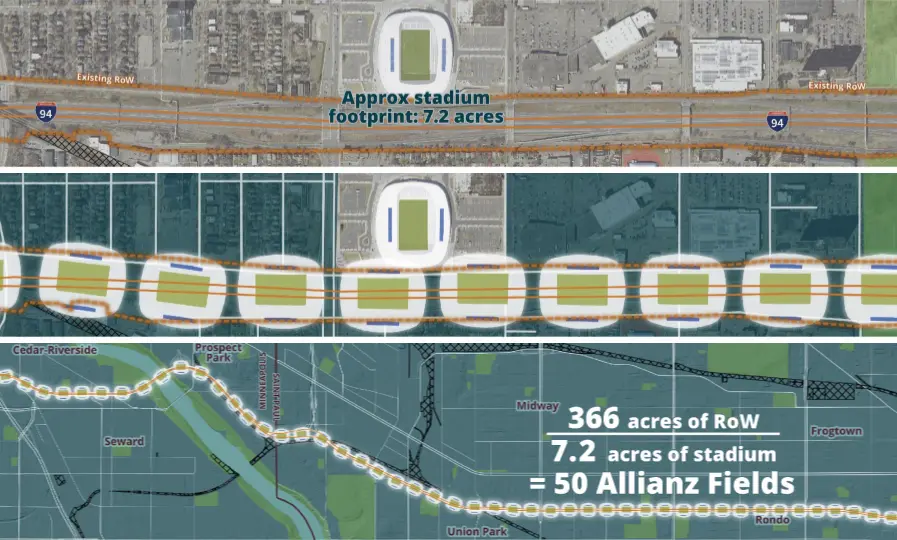
It is well established that funneling billions of taxpayer dollars toward highway expansion does not solve traffic woes. As Minnesota wraps up its warmest winter on record, a new report shows a promising transportation alternative for the Minnesota Department of Transportation’s (MnDOT) Rethinking I-94 project, which will determine the future of the 7.5-mile stretch of highway between downtown Minneapolis and downtown Saint Paul.

The report considers the traffic implications and the health, climate, economic, and reparative justice benefits of converting the Rethinking I-94 project corridor into a boulevard. Boulevard conversions are a fast-growing practice in transportation engineering as cities confront the harmful effects—past and present—of urban highways. The report, conducted by Toole Design Group and Visible City and funded by transportation advocacy organization Our Streets, aimed to fill gaps in understanding around highway-to-boulevard conversions after MnDOT included two “at-grade” alternatives in the ten potential options it presented to the community.

Traffic: “You get what you build for”
The report found that traffic will be manageable when considering the boulevard would be accompanied by land use changes that increase walkability, connectivity and improved multimodal transportation options like dedicated bus lanes. Using drivers’ cell phone data, the report found a majority of vehicle trips along the project area begin and end within one mile from the project area, not the longer-distance trips for which highways were built.
“You get what you build for,” says Norm Marshall, President of Smart Mobility. “The boulevard would incentivize more efficient transportation modes and would have sufficient traffic capacity. The model MnDOT is relying on in their studies does not forecast this adjustment accurately.”
The report shows that a highway-to-boulevard conversion offers immense benefits to surrounding neighborhoods, like Rondo and Cedar-Riverside, which were disrupted by the highway upon construction and still suffer from the health harms of air and noise pollution today.
Reducing Harmful Health Outcomes
Air pollution near highways is significantly worse than what is deemed healthy by the Minnesota Pollution Control Agency and disproportionately affects communities of color. Asthma hospitalizations near I-94 are nearly double the Hennepin and Ramsey County average. Highway noise increases the risk of hypertension and dementia. While electric cars help reduce carbon emissions, they still produce dangerous airborne particulate pollution from their brakes and tires. The report also finds that a boulevard conversion would reconnect neighborhoods, promoting walkability and other active transportation.

Increased Market Value, New Housing, and Job Opportunities
Report authors predict substantial growth opportunities for housing, market value, and jobs. Of the project corridor’s existing 366 acres of right-of-way, the report estimates that 86-96 acres could be redeployed to meet community needs via boulevard conversion. Observed dynamics in local corridors informed a set of projections using a range of existing development patterns. The report projects up to 2,230 new housing units, 2,450 new jobs, and a real estate market value of up to $470M, based on the density of new development. Currently, highway land generates no tax revenue and actually costs people in lost property value, not to mention the tax dollars required by highway maintenance.
Fast Track to Decarbonization
Transportation is still the leading source of carbon emissions in Minnesota and nationally. A boulevard conversion would help MnDOT reach its own goal of reducing vehicle miles traveled (VMT) 20% by 2050 and promote transit options outside of personal vehicles, reducing greenhouse gas emissions.
“What’s most exciting about this report is recognizing that an imaginative option like this is possible,” says District 63A State Representative Samantha Sencer-Mura. “As a representative of a district that was impacted by I-94 and a member of the project’s Policy Advisory Committee, it’s important to consider the potential benefits a boulevard conversion could create for the communities that have been most harmed by I-94.”
What’s next?
The next step of the Rethinking I-94 project begins this fall when MnDOT will finalize the proposed project alternatives.
Take action by emailing key decision makers and standing up for reparative justice.